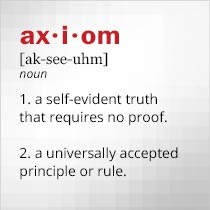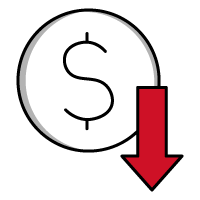Finding Faults with TDR Test Instruments
February 04, 2020
Time-domain reflectometers (TDRs) are easy-to-use test instruments usually associated with finding faults in cables and antennas. How they work is simple: send a pulse with fast risetime into a cable under test and measure reflected signals that take place where the characteristic impedance (usually 50 Ω) deviates from the nominal value, usually because of a break or disturbance in the line. This approach to finding a fault can also be applied to fiber-optic cables using an optical pulse. Comparisons of the transmitted and reflected signals can provide information about the length of the line, the loss of the line, and the locations of discontinuities and breaks in the line. TDRs have been compared to radar systems, which transmit pulses and measure reflections from illuminated targets.
TDRs find changes in impedance through a transmission line, cable, or antenna by analyzing changes in voltage with time due to reflections. This contrasts with frequency-domain reflectometers (FDRs), which typically send swept-frequency signals into a transmission line and study how the signals are affected due to reflections at impedance junctions. TDRs can make measurements such as distance-to-fault tests with access to only one port, such as a cable connector. FDR-based measurements find faults using scattering parameters (S-parameters) to measure forward and reflected voltages, but they require access to at least two (input and output) ports of a cable under test.
TDR measurements can be made with a pulse or step generator, an oscilloscope, and test software running on a computer, but it is typically more convenient to perform TDR measurements on a single instrument devoted to the task. Such dedicated TDRs are available in rack-mountable benchtop style or as portable, battery-powered units perfect for in-field testing. They are available for measurements on metal cables and optical cables and, with built-in computer power and memory, can be set up automatically for measurements on metal cables with specific impedances and dielectric types or optical cables at different wavelengths. When armed with suitable performance levels, a TDR can handle a wide range of applications, from finding faults in runs of coaxial cable to isolating impedance mismatches in printed circuit boards (PCBs).
Prime Parameters
What performance parameters should be compared when considering a TDR? The most fundamental consideration is the type of system or component to be tested, since TDRs are available for testing metal cables and transmission lines, as metal TDRs (MTDRs), as well as for optical cables, as optical TDRs (OTDRs). Each type is designed for a specific test environment—MTDRs for a characteristic impedance, such as 50 or 75 Ω, and OTDRs for a wavelength. Adapters are often available for an MTDR, for example, to equip an instrument set up for testing 50-Ω devices to make measurements at 75 Ω, as in cable-television (CATV) systems.
For an MTDR, its pulse characteristics provide much insight into the instrument’s measurement capabilities. Test signal characteristics such as rise time and pulse width, determine an MTDR’s capabilities to resolve closely spaced faults in a device under test (DUT). An MTDR capable of generating test pulses with fast rise times, for example, will provide higher spatial resolution of multiple faults tan a tester with slower rise times, if the pulses are not overly wide in both cases. The characteristics of a cable under test will also contribute to an MTDR’s measurement capabilities. Pulses with fast risetimes require cables with wide bandwidth to support the high harmonic frequencies contained within those sharp pulse edges; testing cables and connectors with limited bandwidth can limit the test pulse fidelity and degrade the measurement resolution and accuracy.
Any candidate MTDR or OTDR should provide enough control of measurement settings to achieve the resolution and accuracy expected. For example, cables are defined by their velocity of propagation (VoP) or how the characteristics of its component materials change the propagation through the cable relative to the speed of light. A wide VoP adjustment range for an MTDR or OTDR increases the number of different types of cables or DUTs that an instrument can measure. In addition, high resolution in the VoP adjustment range makes it possible to more closely match the precise VoP of a DUT.
Reading Reflections
The Tektronix 1502C Metallic Cable Tester is an example of a portable MTDR with performance levels that meet the needs of laboratory and in-field use. It is designed for finding faults in high-frequency, high-speed 50-Ω cables as well as antennas and PCB transmission lines. It uses test pulses with fast 200-ps risetime (and 25-μs pulse width) that make it possible to find faults represented by changes in impedance as small as 0.5 Ω. It can resolve faults spaced as closely as 0.6 in. and can test cables as long as 2000 ft measurements on DUTs other than 50 Ω are possible by means of a front-panel control that changes the vertical or impedance scale of the display screen. In addition, mechanical adapters are available, such as 50 to 75 Ω, when it is necessary to find faults in test environments other than 50 Ω. The portable MTDR runs for about 8 hr on a single battery charge.
For greater flexibility, the Mohr CT100 series portable MTDRs add functionality to basic TDR functions. The battery powered MTDRs are available with choice of test port connectors (such as a grounded BNC in the model CT100B and SMA in the model CT100HF. Using 300-mV pulses with 60-ps risetime, and a time base with 760-fs resolution, CT100 series MTDRs can measure faults with impedance values from 1 to 1500 Ω with better than 0.1-Ω resolution for 50-Ω cables as long as 40,000 ft. But they can also perform single-port FDR measurements on those same 50-Ω cables, estimating forward cable loss (S21) and return loss (S11) as benefits of built-in computer power, high-speed analog-to-digital converters (ADCs) with 16-b vertical sampling resolution, and extensive digital signal processing (DSP).
The CT100 series MTDRs can even find faults in composite cable assemblies and perform rigorous testing on military-grade cables, such as MIL-STD-1553B cables. The portable testers provide about 8-hr run time on a battery charge and save thousands of measured TDR traces via 2 Gb flash memory. The MTDRs provide a pair of independent cursors to simplify differential impedance and distance-to-fault (DTF) measurements. Impedance matching adapters, such as 50-to-75-Ω adapters, are available to make measurements on non-50-Ω DUTs.
In-field testing often requires multiple measurement tools to be carried to out-of-the-way places, such as remote antenna towers, and having several instruments within a single portable housing can make life much easier. The Keysight N9914A FieldFox handheld analyzer can be configured with a cable and antenna tester (CAT), spectrum analyzer, and vector network analyzer (VNA) with frequency range of 30 kHz to 6.5 GHz. It can perform DTF and one-port cable loss measurements, and even has built-in calibration capabilities to simply in-field two-port VNA measurements at those remote sites.
Similarly, the Anritsu S362E allows users to carry multiple measurement tools into the field in one light-weight package. The portable, battery-powered instrument combines a cable and antenna fault finder with a microwave spectrum analyzer. The cable and antenna analyzer spans 2 MHz to 6 GHz and the spectrum analyzer from 9 kHz to 6 GHz. It is not a TDR, however, but uses FDR techniques to perform DTF measurements and can even be equipped with an optional power meter for additional measurement power.
For those working with optical networks, the Fluke CFP-100-M CertiFiber Pro Multimode Optical Loss Test Set uses built-in computer power to make use extremely simple. In addition to supporting a wide range of optical wavelengths, such as 850, 1300, 1310, 1490, 1550, and 1625 nm, its automatic setup function can sense the characteristics of an optical fiber connected to the OTDR and change measurement settings accordingly. It can even identify and record different components along an optical transmission line, such as connectors, splices, and bends, with an “EventMap” function. But for those who prefer “hands-on” testing, it allows a user to switch to “Manual Expert” mode to adjust automated settings.
For users who may require TDR testing only occasionally, with greater needs for microwave S-parameter measurements, one possible solution may be a network analyzer that provides MTDR capability as an option, such as the Keysight/Agilent E5071C. This is a rack-mountable benchtop instrument that is well suited for finding faults in high-frequency devices, including PCB transmission lines, solder joints, IC packages, and miniature antennas as well as high-frequency cables. Specifiers even have a choice of two- or four-port models and many different bandwidths, including 4.5, 14.0, and 20.0 GHz versions.
To learn more about any of these instruments, or to rent or purchase these or other test equipment, please visit Axiom’s website at www.axiomtest.com to view our inventory. If you would like help selecting the right equipment for your project, contact Axiom Test Equipment’s sales department at sales@axiomtest.com, or by calling an Axiom Account Manager at 760-806-6600.
Back to BLOG








